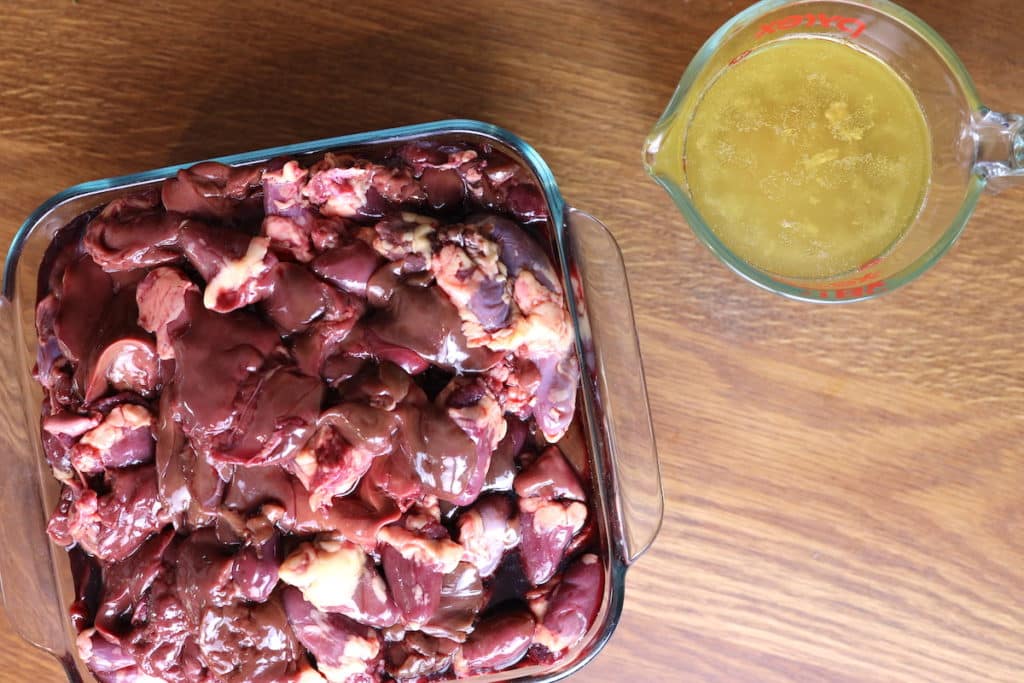Chicken Heart and Liver | How To Sneak Nutrient Dense Organs Into Your Diet Without Anyone Knowing
We have written before about the power of organ meats and the huge impact that including them daily in our diet has had on our lives. You can read more in our post, How Liver Changed My Life. But what about chicken heart and liver? In this post, we break down how you can include these nutrient dense organs into your family’s diet and why you would want to!
Eating organ meats has gone out of style in recent years being pushed aside by the more popular muscle meats. However, there is a strong case for why everyone should consider adding them as part of their regular diet.
Nose to Tail Eating
Throughout history, our ancestors consumed food in a nose to tail fashion – eating and using every part of an animal. It was not just important for health; it was necessary for survival.
In fact, Weston A. Price, a famous dentist at the beginning of the 20th century traveled the world studying the health and specifically, teeth and jaws, of different people groups. What he found was that the healthiest tribes were those that prized organ meats and considered them sacred. This was especially true for pregnant and nursing mothers for growing robust and healthy babies.

In more recent time, since the industrial revolution and factory farming, food habits greatly shifted. Including how meat is consumed. Where meat was once viewed as a delicacy to be prized it could now be found in abundance. With that, muscle meats have grown in popularity while organ meats have gone almost completely untouched for several decades.
Our Story – Is Eating Liver Good for You?
You can read more about my story of how liver changed my life. But to give you the cliff notes, after trying to get pregnant for years, I began incorporating organ meats daily into my diet – specifically liver. Within a couple of months, I was pregnant with our oldest child. Since then, in two separate incidents when I stopped my habit of consuming organ meats regularly. I actually had dreams nudging me to get those organs back into my diet, clearly the body knows what it needs!
Since moving to our farmstead property and raising our own meat, we not only feel compelled to include organ meat for the health benefits but also out of respect for the animal. We strive to raise our animals in the best possible environment and we are so grateful for their lives and all of the nourishment that they provide us. We would want to use every possible part of the animal that we could.

On our 5-acre property, raising chickens for meat has been a great addition to the farm. We have plenty of space for them to enjoy fresh pasture and they do a great job of adding fertilization. After we raised and processed over 60 freedom ranger chickens this summer, we had a bag of chicken hearts and livers waiting for us in the freezer.
Chicken Heart and Liver Nutrition
While beef liver is considered the gold standard as far as nutrient density for organ meats, the organ meats from all animals that are raised in good conditions and fed a proper diet, are still extremely nutrient dense, including chicken heart and liver.
Below is a quick breakdown of the nutritional information, specifically in chicken liver as compared to chicken breast.
| Nutrient | Chicken Liver (1 oz) | Chicken Breast (1 oz) |
| Calories | 48 calories | 55 calories |
| Fat | 1.8 grams | 2.2 grams |
| Vitamin A | 81% | .6% |
| Riboflavin | 38% | 2% |
| Folate | 39% | .2% |
| Vitamin B12 | 99% | 1.4% |
| Selenium | 35% | 10% |
Clearly, from a nutritional standpoint, chicken liver outshines the breast significantly. Chicken liver is especially high in vitamin A and B12 while containing significant amounts of many essential vitamins and minerals. Chicken heart is also extremely nutrient dense and is especially high in the B vitamins, specifically B12, along with zinc and copper.
How to Eat Chicken Heart and Liver
Hopefully, you’re convinced that eating organ meats and specifically chicken heart and liver is a good idea. But how?
The beauty of the organ meats of chicken, like chicken heart and liver is that they are much milder than the organ meats of other animals. While it can be difficult for many to stomach the smell or taste of cooking and eating beef liver, chicken heart and liver is much more palatable.
If you are adventurous, simply frying up chicken heart and liver together in a frying pan with some salt and seasonings can be a great way to enjoy them.
However, because I like to spread out our consumption of organ meats to a little bit everyday as opposed to everything at one sitting, I prefer a different method.

Making Pureed Chicken Heart and Liver
My solution is to puree chicken heart and liver together (you could also do just one or the other). This way, I can put a few spoonful’s of the puree into something we are already eating each day. Everyone in our family gets the benefits, from the pickiest of eaters to the most adventurous, and no one can even tell that it’s there.
Step 1
To make this puree, begin by lightly sautéing your chicken heart and liver on a frying pan with a spoonful of fat – lard or butter are our favorite. When you are sautéing, think rare steak as opposed to a well-cooked piece of meat.
Step 2
After the chicken heart and liver are cooked, place them into a high-powered blender (we love our Vitamix) or a food processor. You may need to add a small amount of liquid to make it easier to blend. I generally use roughly a quarter to a half cup of chicken broth, depending on how many chicken hearts and livers I’m pureeing. Add salt and any other spices of choice and blend until a smooth paste is formed.

Step 3
From there I spoon it out and fill a tray of silicone molds. We generally use mini-loaf size or muffin cups but an ice cube tray would also work.
Step 4
Freeze your chicken heart and liver puree until frozen. Then pop them out and store in a gallon size Ziploc bag.

Step 5
From there, I will take one out and place it in a small container in the fridge and each day add a few scoops to a meal that we are having. I’ve found it easiest to include with breakfast and generally just add a couple scoops of the chicken heart and liver puree to our scrambled eggs each morning. Alternatively, if eggs aren’t an option, you could easily add some to any soup, stir fry or even casserole that you might be makings. For our family, we generally go through a muffin cup size portion of pureed heart and liver every 2-3 days.

Eat Liver Every Day!
There you have it! A simple way to get all of the amazing nutritional benefits of chicken heart and liver into your family’s diet each day without anyone even knowing.
If you are looking for more inspiration on ways to get organ meats into your diet, check out:
Pin it for later!







